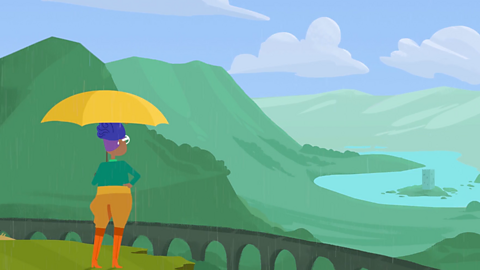Watch: Earthquakes
Jelly is my favourite pudding. This one is particularly wobbly for some reason. Oh… it’s an EARTHQUAKE!
This one is quite weak, and earthquakes here in Japan are actually quite common so there’s no need to panic.
To understand earthquakes we need to look at the structure of the Earth.
The Earth is made up of different layers.
At the centre is the core, around that is the mantle, and on the outside is the crust.
The Earth’s crust is cracked into different pieces called plates, a bit like an eggshell.
These plates are very slowly moving and shifting around and where two plates move towards each other, you find the most powerful earthquakes.
Friction causes pressure to build up until it becomes so great that it is suddenly released as a shock wave. This is the earthquake.
Most earthquakes are so small they can only be detected by special equipment.
But some can be so powerful they can destroy whole towns and cities in minutes.
Sometimes, if an earthquake occurs under the ocean, it creates a huge wave called a tsunami.
Although earthquakes in the UK are very weak and rare, for many countries like Japan, they are relatively common.
People living in those countries will take extra precautions, like building earthquake-resistant buildings that sway with the shock wave, or by providing earthquake shelters.
They even practise what to do if an earthquake strikes, like taking cover under a sturdy piece of furniture to protect themselves from falling debris.
Earthquakes are a fact of life in this part of the world, so as soon as an earthquake ends, it’s business as usual. Err… more jelly please! …Oh
Asks for more jelly in Japanese
The layers of the Earth
The Earth is made up of different layers:
- the core at the centre, which is mainly metal
- the mantle, which is mainly rock
- the crust, which is the part we can see
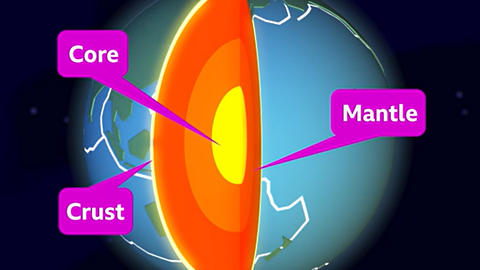
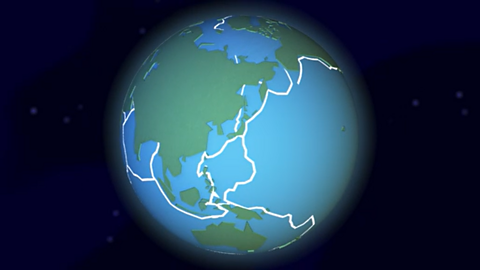
The crust (together with the upper layer of the mantle) is made up of different pieces, called tectonic plates. These plates fit together like a jigsaw and are moving at a rate of a few centimetres a year, in different directions and at different speeds.

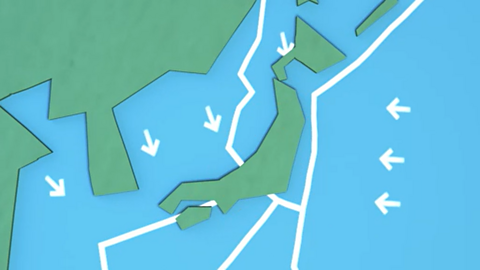
Some plates slide past each other, others move away from each other and some bump into each other.
Sometimes these plates lock together when they meet. This is called a plate boundary or a fault line.
What are earthquakes?
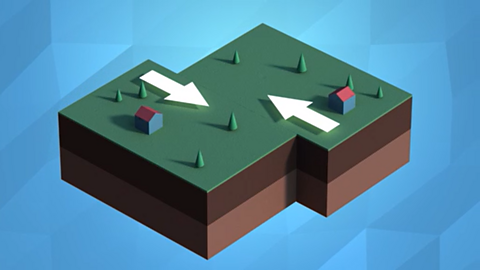
As plates move in different directions over long periods of time, friction causes energy to build up.
It becomes so great that the energy is released, which creates a shock wave - an earthquake.

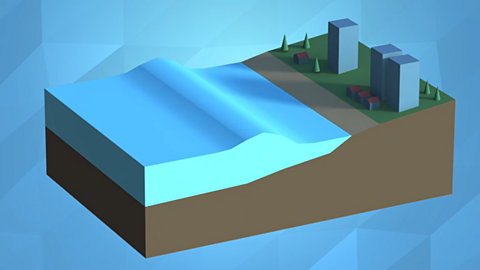
If an earthquake is beneath the ocean it can create a series of huge waves, called a tsunami.
There are thousands of earthquakes across the world each day.
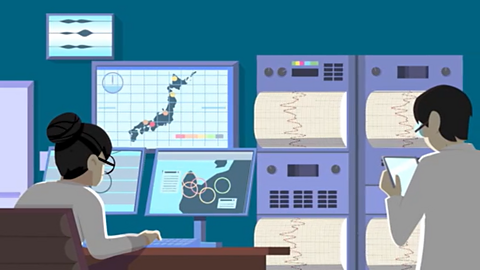
Some are so small that they can only be detected by specialist equipment. Others can be so intense that they can destroy towns and cities.
The Richter magnitude scale is used to measure the size of earthquakes.
Many earthquakes occur around the Pacific Ocean. People who live there, in countries such as Japan, are used to earthquakes happening. They build earthquake-resistant buildings that sway with the shock waves rather than fall down.
Although there are earthquakes in the UK, they are rare and so small that most people do not feel them.

Watch: Explain this... Earthquakes
Watch this video from 91»»±¨ Teach to learn about what causes earthquakes.
Every thirty seconds, there's an earthquake somewhere in the world. Although, don't worry. Most are minor.
The Earth's surface is made up of a number of plates that are almost always moving.
Most earthquakes happen where these plates meet.
Some of these plates slide past each other, causing friction to build up.
While some move towards each other, causing a build up of pressure.
When these forces - friction or pressure - are released, they produce a violent jolt that shakes the land: an earthquake.
Although most are minor, a major earthquake can cause a lot of destruction.
So in parts of the world where earthquakes are common, people take precautions.
For example, they don't make buildings very tall, so they won't fall down easily.
Sometimes, they use rubber foundations to absorb some of the force coming from the earthquake's tremors.
Plastic is used in windows, rather than glass.
Schools in these countries practise what to do if an earthquake happens, like sheltering under a desk to protect yourself from falling objects.
The Earth's plates will keep moving and earthquakes will continue to occur.
All people living in countries affected by earthquakes can do, is be prepared to manage their destructive power.
Activity: Quiz – Earthquakes
Bitesize Primary games. gameBitesize Primary games
Play fun and educational primary games in science, maths, English, history, geography, art, computing and modern languages.

More on The natural world
Find out more by working through a topic
- count14 of 16
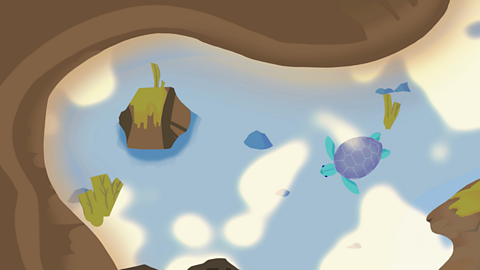
- count15 of 16

- count16 of 16
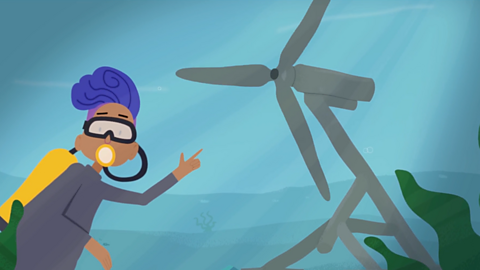
- count1 of 16
